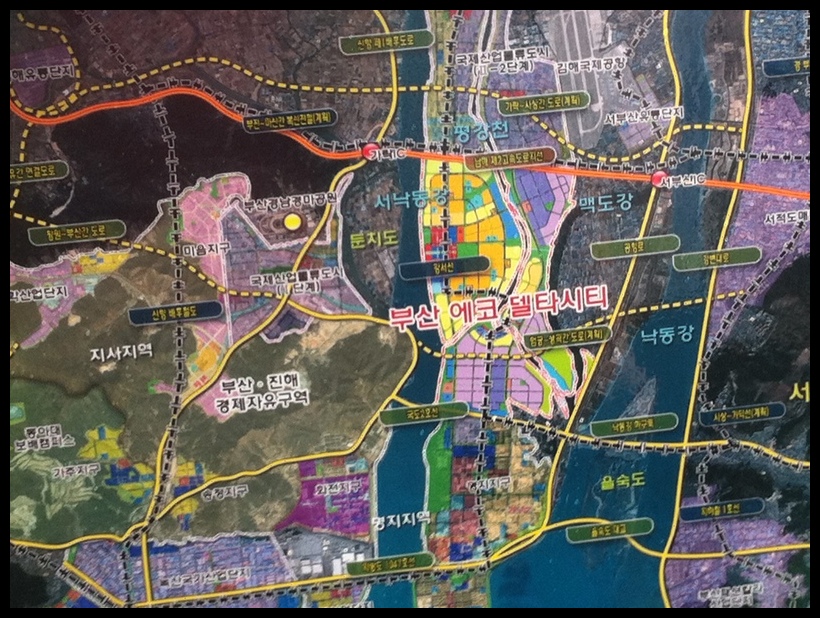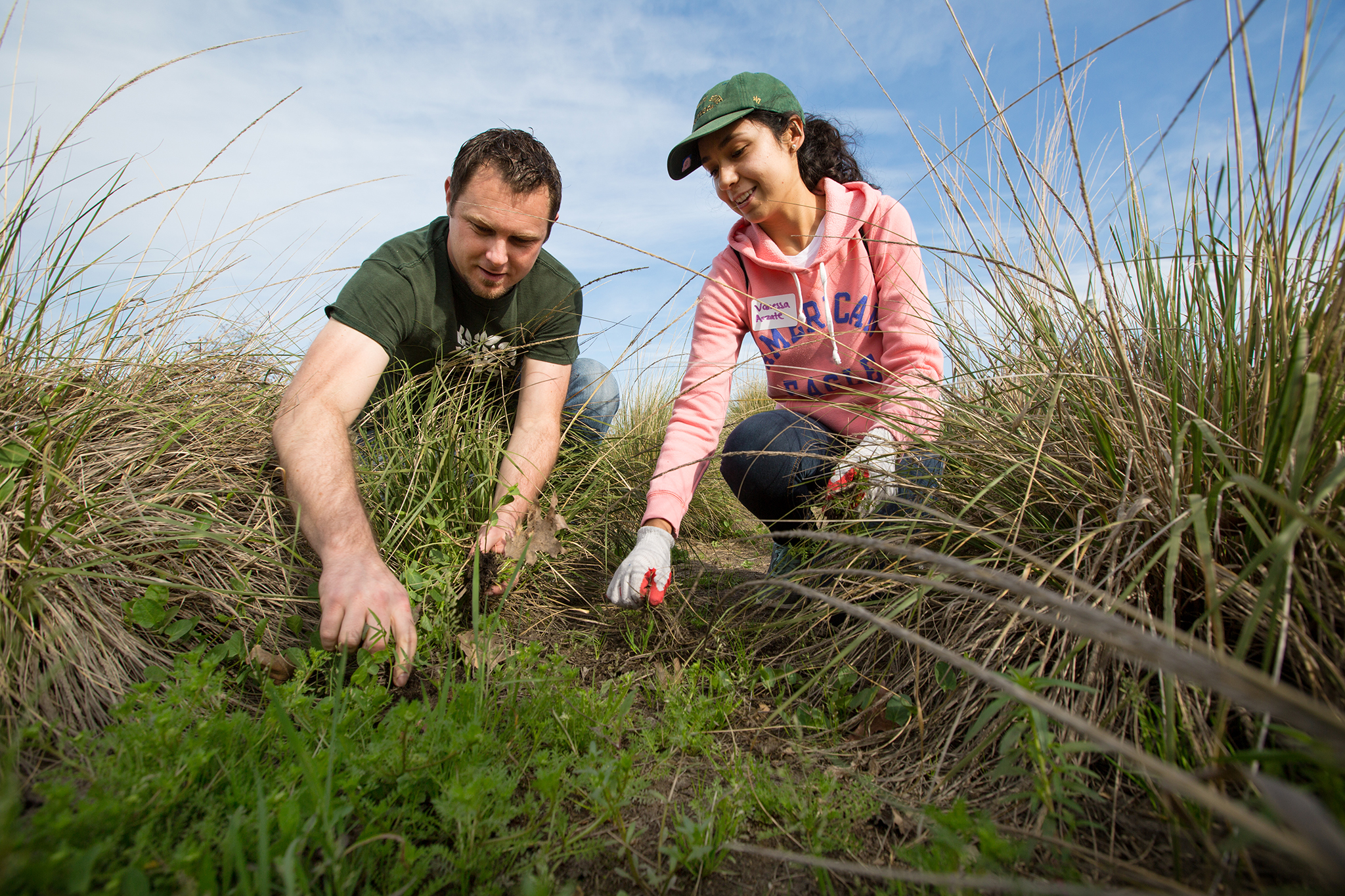
This image shows the Nakdong River barrier system. The image in the corner shows K-Water’s control panel for the upstream weirs. These systems help prevent flooding and control flow rate along the river.
Today, I met with Dr. Hyunsuk Shin of Pusan National University. He provided an overview of the low impact development (LID) research facility. The center will be built adjacent to an existing earthquake research building on the university’s second campus in the next four years. Researchers will evaluate LID concepts in South Korea, examining infiltration in native silt and clay loam soils as well as water quality issues.
We then visited a division of K-Water that is responsible for maintaining water flow and levels in Busan’s Nakdong River. A tidal gate barrier system across the river can be raised and lowered to prevent tidal surges from flooding the river’s lower limits. A series of river crossings with channel weirs can also be raised to control downstream flow rates. All of these systems are controlled by K-Water staff in one room of the facility.
K-Water is the lead agency on the planning of Eco Delta City, which will be located between the two branches of the river. The city will cover approximately 300 km2 (108 mi2). Preserving a minimum 100-m (328-ft) buffer along the river front, will help make the city ecologically friendly. LID treatment systems will be fully incorporated in the project’s design, addressing water quality and runoff volumes issues as necessary. The city will have commercial, residential and industrial zoned areas. K-Water’s plans for Eco Delta city to be a template of green building to be used in other parts of the world.







